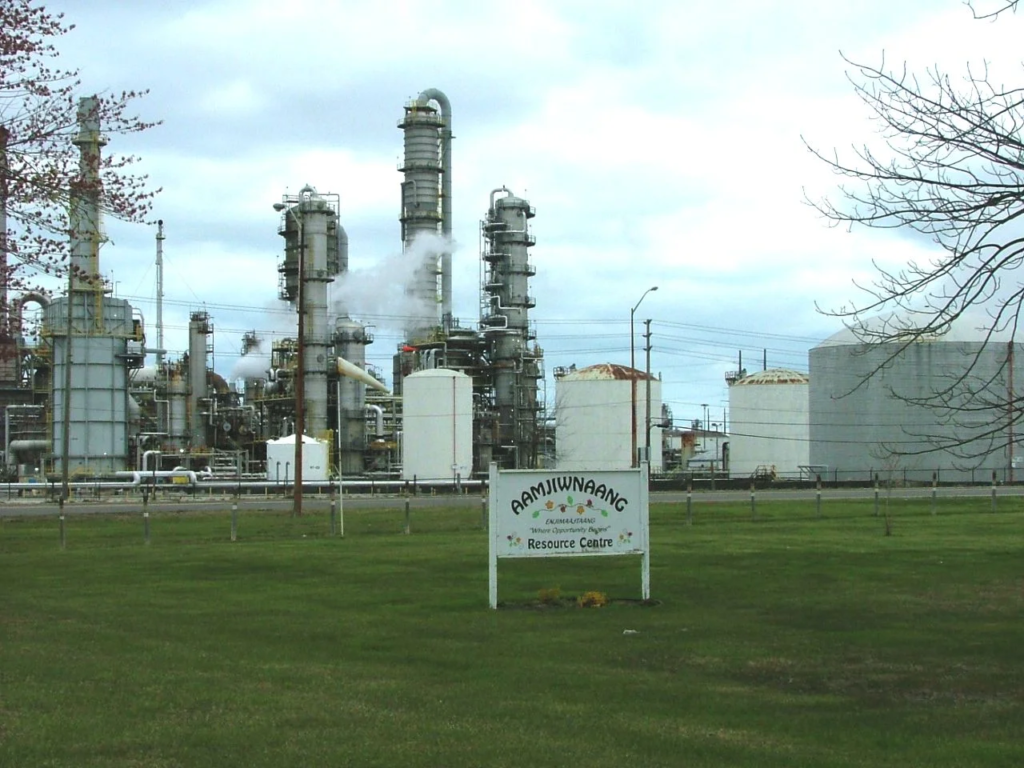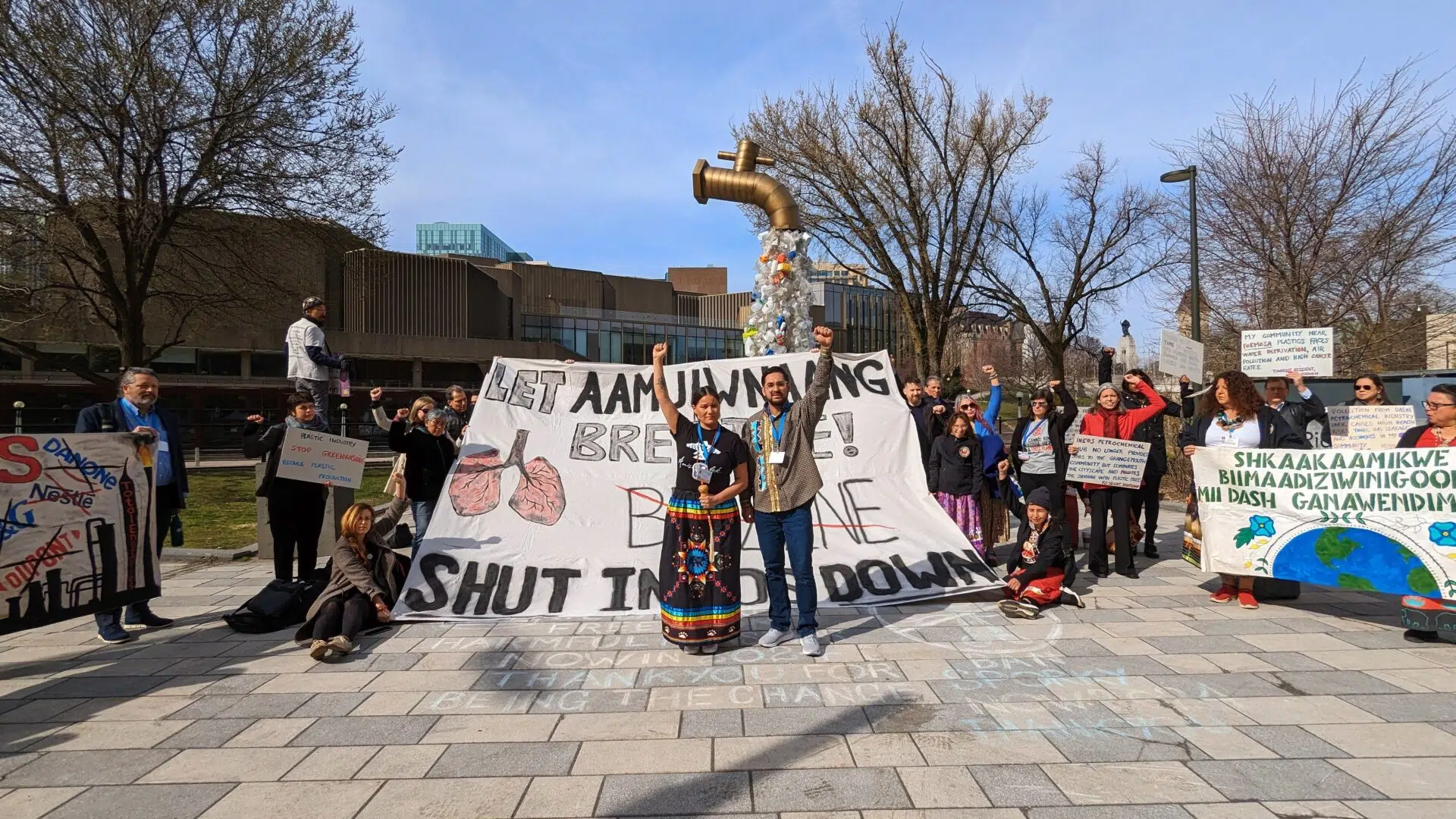Aamjiwnaang First Nation do not want to be victims of Canada’s Chemical Valley. Earlier this month, they took their fight to Queen’s Park todemand the Ontario government work with the nation, and address the impact of decades of toxic pollution.
“Aamjiwnaang will no longer be known as the community that is a victim of Chemical Valley,” said First Nation Chief Janelle Nahmabin at a press conference on November 7th at Queen's Park. "We will be known for our environmental leadership."
In April, Aamjiwnaang declared a state of emergency after high levels of benzene were detected to be leaking from INEOS Styrolution’s chemical plant. Several Aamjiwnaang community members were brought to the hospital after falling ill, and Aamjiwnaang remains under a state of emergency today because of the high levels of pollution.
Benzene levels have spiked in recent months, according to monitoring done by Aamjiwnaang and the Ontario government. Aamjiwnaang independently monitors the nearby petrochemical industries for chemical leaks, and regularly records and reports the pollution.

Benzene is a byproduct from nearby facilities that process crude oil to gasoline. Ineos uses it to produce styrene for manufacturing auto parts, electronics and medical appliances. However, the hazardous byproduct has been linked to cancers and blood issues.
Weeks after the Ineos benzene leaks, the company announced it was permanently shutting down operations instead of complying with the province's new Environmental Protection Act, thatimposes stricter benzene limits and monitoring requirements on the industry. This will put around 90 workers out on the street. “The production site in Sarnia is currently shut down due to recent orders,” said Ineos CEO Steve Harrington in June.
Coined the “Chemical Valley,” the 15 mile-wide region is home to 40% of Canada's chemical industry with some of the world's largest corporations, ExxonMobil, Enbridge, Suncor and more, found along the St. Clair River and Aamjiwnaang First Nation reserve.
In a 10-year span, there have been 870 reports from community members impacted by industrial incidents recieved by Ontario’s Ministry of Environment, Conservation and Parks. There are currently 33 industrial flare stacks in the Sarnia area. 18 of these stacks are within one kilometer of people’s homes.
Long term health effects are linked to the area due to the proximity between residents and the petrochemical facilities. Aamjiwnaang directly neighbours the 60 oil refineries and petrochemical facilities that make up the Chemical Valley.


